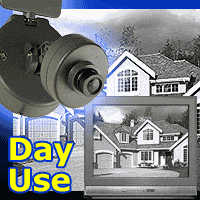
Digital video recorder (DVR) is a device that records video without videotape to a hard drive-based digital storage medium. The term includes stand-alone set-top boxes and software for personal computers which enables video capture and playback to and from disk. The DVR provides a convenient, if limited, replacement for the multiplexer + VCR combination and provides non-linear access to recorded material usually selected by camera ID, time and date. The consistency of quality of recorded material will in general be higher than that obtained with analogue tape although the actual quality achieved may or may not be better, depending on the compression algorithm and individual configuration.
In general more programmable options for individual video stream recording parameters, (picture resolution, number of frames per second, trigger options, start/stop times etc), are available, but a DVR is only useful where the analogue cameras are all cabled back to the DVR’s location. Competent DVRs now feature UDP (CAT 5) network ports so that the device can be provided with an IP address and thereby become accessible over an Ethernet network. It uses a single IP address to access thousands of cameras without loading your network. It's easy to set up and use.
































